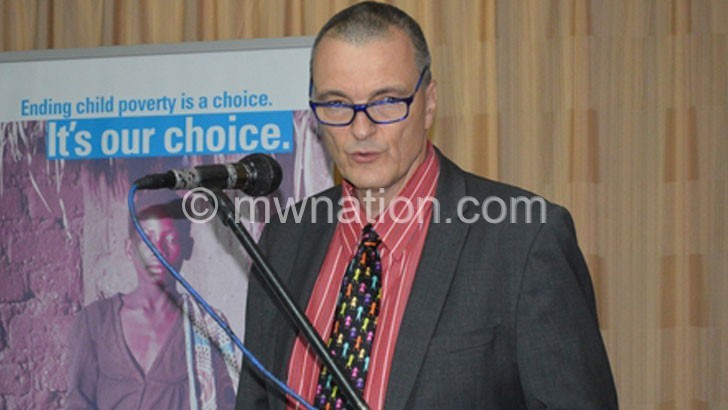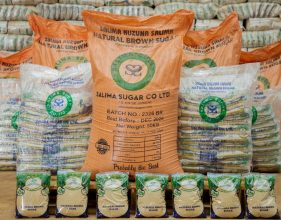Child poverty still high—Report
A recent Child Poverty Report in Malawi has shown that 60.5 percent of the country’s children are still deprived of basic needs such as quality education, sanitation facilities, health and safe drinking water.
This is down from 63 percent of children below 17 years who were also found to be multi- dimensionally poor in a similar report in 2016.

The 2018 report states that the highest levels of deprivation are found in housing at 60 percent for all age groups, except the 15-18 age group where the highest deprivation rate is education at 87 percent.
The study was undertaken by National Statistical Office (NSO) in collaboration with the United Nations Children’s Fund (Unicef) and the Department of Economic Planning and Development in the Ministry of Finance, Economic Planning and Development.
Speaking during the launch of the report in Lilongwe on Monday, Unicef country representative Johannes Wedenig said it is important to start talking about implications of the findings.
He said: “It is not enough to simply disseminate study reports. There is need to start talking about the implications of the findings. We can only move forward if we create time to reflect, re-energise ourselves and plan our next steps.”
According to the findings, about 70 percent of children in rural areas are poor compared to 25 percent in urban areas.
Reads the report in part: “In rural areas, nearly 50 percent of children are both monetarily and multi-dimensionally poor compared to 13 percent in urban areas. Children in rural areas are three times more likely to be deprived in housing and four times more on information.”
In terms of district level disparities in deprivation rates, Dedza is the highest at 78 percent, followed by Machinga with 76 percent and Salima is at third with 74 percent.
The lowest rates are found in Mzuzu City at 18 percent and in Blantyre at 20 percent.
The report also shows that factors that are driving child poverty the most include education, gender, age and other household socio-economic characteristics.
In her presentation, NSO commissioner for statistics Mercy Kanyuka said poverty is not only income deficiency, as having financial means may not always lead to accessing necessary goods and services.
She said: “Access to goods and services may not depend only on household income but also social status, availability of social services, health conditions, geographical locations and availability of information, among other factors.”
Kanyuka, therefore, called for the inclusion of other aspects of poverty in measuring child poverty other than conceptualising poverty “as people living in low-income households, relative to an agreed poverty line”.
On his part, acting chief director in the Department of Economic Planning and Development Peter Simbani said government is running a number of programmes but there is need to check if they are achieving their intended objectives.





